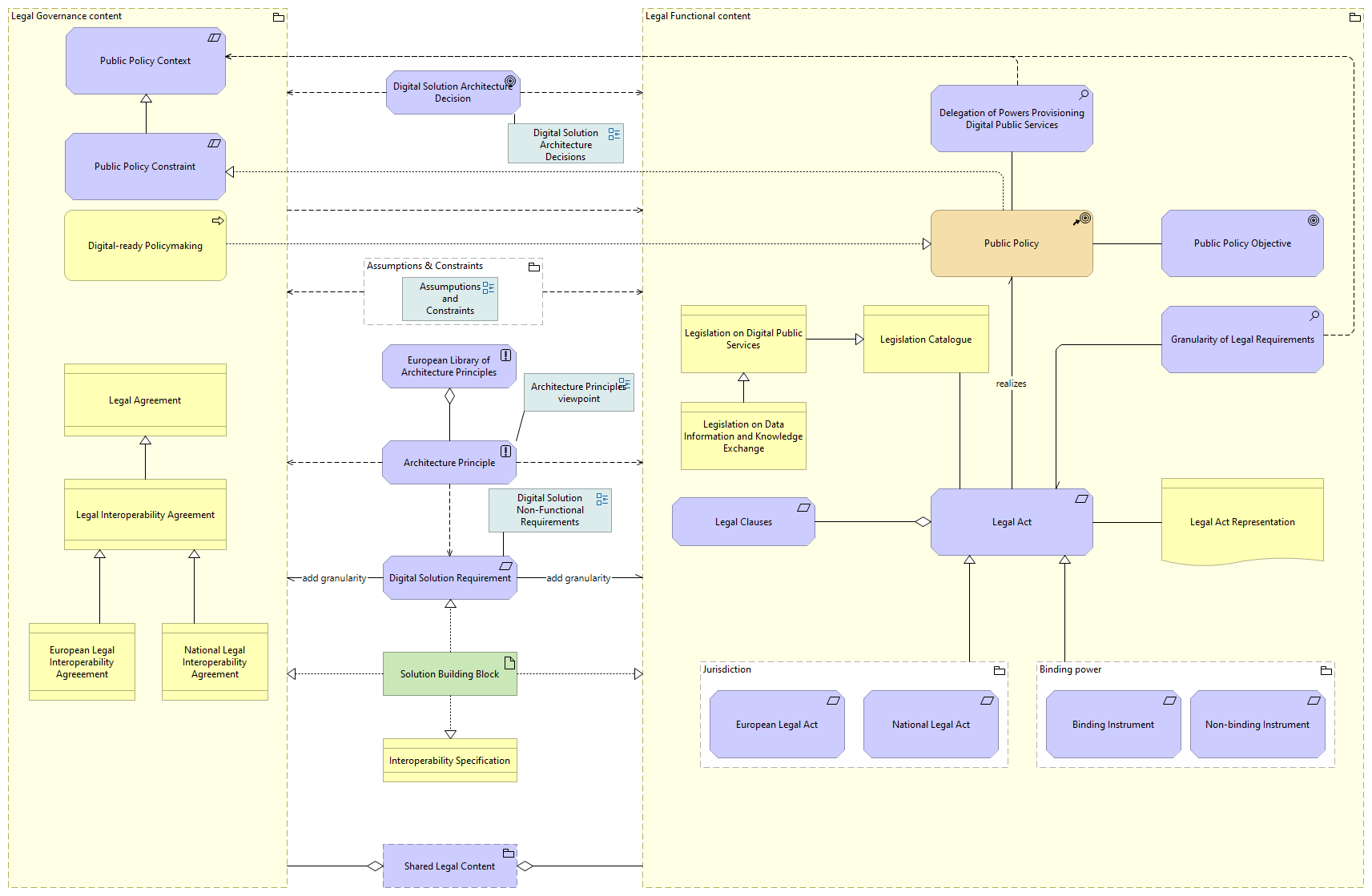
The Legal view models the most salient public policy development enablers and implementation instruments that shall be considered to support the End-to-End design of interoperable digital public services.
Narrative:
A [Public Policy] aims at addressing the needs of a group of stakeholders, and it is associated with a [Public Policy Objective]. The policy is formulated and realized with the help of [Legal Act] which has two specializations [European Legal Act] and [National Legal Act] in the form of [Binding Instrument] or [Non-Binding Instrument]. A key type of legislation for behavioural interoperability is the [Legislation on Data Information and Knowledge Exchange], which is a specialization of a legal key enabler for the delivery of digital public services, the [Legislation on Digital Public Services]. Both are contained in [Legislation Catalogue], as they are specialisations. [Legislation Catalogue] include [Legal Act] and the different specialisations [European Legal Act] and [National Legal Act], and the different forms [Binding Instrument], and [Non-Binding Instrument]. The [Legal act] aggregates [Legal Clauses] and is realised by [Public Policy] and linked to the [Granularity of Legal Requirements]. [Public Policy] realises [Digital-ready Policymaking], and the same time [Public Policy Constraint] which is a specialisation of a [Public Policy Context] realises the [Public Policy]. [Public Policy] has associated a [Public Policy Objective] and [Delegation of Powers Provisioning Digital Public Services], which influences [Public Policy Context]. As part of the Legal Governance Content, [Legal Agreement] is specialised by [Legal Interoperability Agreement] focused on formalizing governance rules enabling collaboration between digital public services. [Legal Interoperability Agreement] can be reached at the European level [European Legal Interoperability Agreement] or the National level [National Legal Interoperability Agreement].
These different Architecture Building Blocks define the [Legal Governance Content] and the [Legal Functional Content], which both are aggregated by [Shared Legal Content].
| dct:title | Legal view |